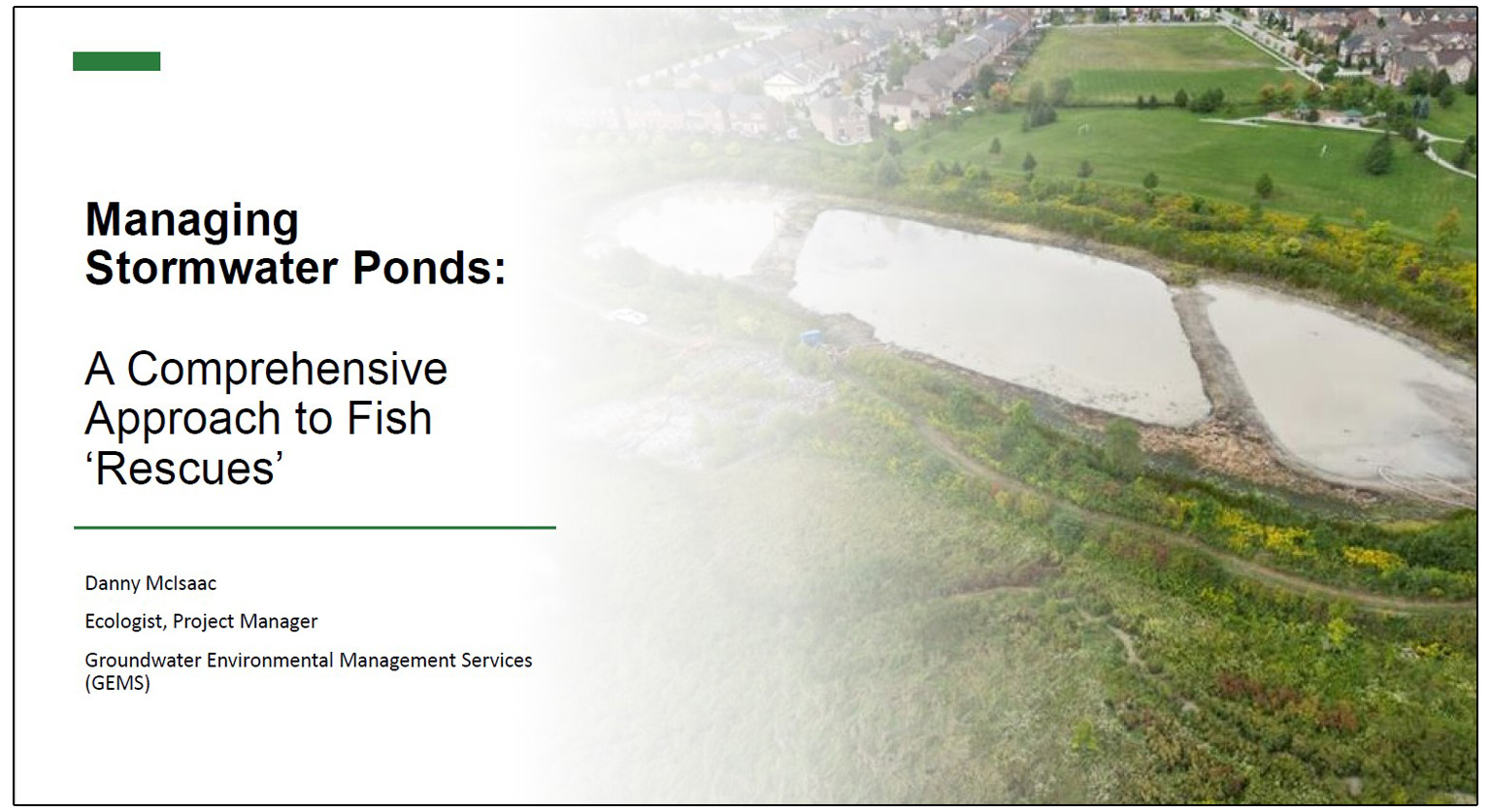TRACK 2, DAY 1
ABSTRACT
Stormwater ponds play a critical role in managing urban runoff, but they often become unintended habitats for fish and other aquatic life.
In this presentation, we delve into the complex issue of stormwater pond management with a specific focus on fish “rescues”. Our discussion will revolve around four key subtopics: how fish find their way into stormwater ponds; methods for safely capturing these fish; the necessity of euthanizing most fish; and considerations for turtles and frogs inhabiting these environments.
Stormwater ponds may seem an unlikely refuge for fish, yet many species find their way into these systems through various means. We explore the mechanisms through which fish ingress occurs, including natural migration, storm events, and inadvertent introductions. Understanding these entry points is crucial to developing effective management strategies.
Fish removal from stormwater ponds presents both opportunities and challenges. We discuss the techniques and equipment used for catching fish without harming them, emphasizing their welfare and the importance of minimal stress during the capture process. We also explore the role of trained professionals and the advantages of community involvement in fish “rescues”.
While the concept of “rescuing” fish from stormwater ponds may seem noble, it is essential to recognize the limitations and ethical considerations involved. The presentation sheds light on the reasons behind the often controversial decision to euthanize most fish, highlighting the potential negative ecological impacts of relocation and the need for species-specific assessments.
In addition to fish, stormwater ponds often host turtles and frogs, adding an extra layer of complexity to management efforts. We discuss the challenges and solutions related to these amphibians and reptiles, including habitat enhancements, translocations, and the importance of preserving their populations while maintaining the functionality of the stormwater system.
Overall, this presentation provides a comprehensive overview of stormwater pond management, with a particular emphasis on the unique challenges posed by the presence of fish and other aquatic life. It underscores the importance of a holistic approach that considers not only fish “rescues” but also the broader ecosystem dynamics.
By understanding the mechanisms of fish ingress, employing humane fish capture methods, and making informed decisions about fish relocation, stormwater pond managers can strike a balance between urban infrastructure and environmental conservation.
This presentation offers insights and guidance for professionals and communities seeking to effectively manage these valuable, yet complex, aquatic environments.
ABOUT THE PRESENTER

Danny McIsaac, GEMS
Danny McIsaac is an ecologist and project manager at Groundwater Environmental Management Services (GEMS).
He completed his Master’s of Science from the University of Waterloo, focusing on stormwater pond and wetland ecology, specializing in herpetology and fisheries. With over six years of professional experience, he has successfully collaborated with diverse stakeholders, including government agencies and private partners.
Within the GEMS team, Danny leads projects that center on terrestrial and wetland systems, showcasing expertise in managing a diverse array of wildlife from reptiles and amphibians to fisheries and birds, with a dedicated focus on species at risk.
Notably, Danny is responsible for overseeing fish and wildlife rescues in stormwater pond projects, ensuring the acquisition and adherence to permits and approvals. His role is to seamlessly integrate environmental considerations into construction and land development projects.
In addition to his project management experience, Danny plays a crucial role in ensuring compliance for stormwater pond projects with any unforeseen issues, including protection of species at risk and significant habitat as well as working outside the designated window for fish and wildlife rescues. He ensures that the construction progresses without compromising the ecological integrity of the surrounding environment or harming significant wildlife, while keeping the project on schedule.

